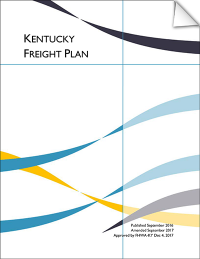For months, farmers and ranchers along the Missouri River from eastern Nebraska through western Iowa haven’t been able to rebound from major flooding that destroyed billions of dollars of crops, cattle and property. The flooding situation has worsened due to heavy mid-spring rains that caused the Mississippi River and many of its tributaries from St. […]
Author: Mid-America Freight Coalition
The Mississippi Valley Conference of State Highway and Transportation Officials (MVC) was organized in 1907, prior to the establishment of a national transportation organization, which later became known as AASHTO. In 2010, the organization changed its name to the Mid America Association of Transportation Officials (MAASTO) to better reflect the location of the member states. The goal […]
In August, the MAFC technical representatives from the 10 member states met in Traverse City, Michigan for the 2018 MAFC Annual Meeting. This meeting was held in conjunction with the MAASTO 2018 conference, which dedicated a track to freight topics throughout the two-day event. The content for the breakout sessions in this track was driven by MAFC […]
The Mid-America Freight Coalition, in cooperation with the MAASTO Working Group on Automation and Platooning, has published its report, Developing a Regional Regulatory Approach to Truck Platooning in the MAASTO Region: A Literature Review of the History, Progress, and Benefits of Truck Platooning. Download the Truck Platooning Report This report provides an overview of the development of truck platooning and automation […]
The members of MAFC welcome Dr. Soyoung Ahn as the organization’s new executive director. In this role, Dr. Ahn succeeds Professor Teresa Adams, who resigned from the position in which she served for a decade. Dr. Ahn is an Associate Professor in the Department of Civil and Environmental Engineering at the University of Wisconsin–Madison where […]
The purpose of this report is to provide an understanding of truck platooning and how this technology can be adopted across MAASTO freight corridors in a uniform manner. Coordinated regulations across state boundaries will better serve and meet the needs of the industry. The overall goal is to develop a Midwest Truck Platooning Regulatory Model that provides for harmonization of regulations governing truck platooning across the MAASTO region.
Three MAFC member states’ freight plans scored among the best in a recently release report from the American Transportation Research Institute (ATRI), “Identifying State Freight Plan Best Practices.” Freight plans from Iowa, Michigan and Ohio were among a dozen freight plans selected by ATRI as exemplary in terms of planning, assessment, and implementation practices. The goal […]
MAFC member, the Minnesota Department of Transportation has received confirmation from the FHWA on their updated Statewide Freight System Plan dated November, 2017. This plan aligns with Minnesota GO and the Statewide Multimodal Transportation Plan, which establish Minnesota’s overall vision for transportation. In addition, the plan meets the freight planning requirements of the federal Moving Ahead for […]
The Kentucky Transportation Cabinet received approval of the Kentucky Freight Plan on December 4, 2017. The Kentucky Freight Plan is a supplement to the Kentucky Transportation Cabinet’s 2014 Long-Range Statewide Transportation Plan. The Freight Plan was developed upon the recommendations of the federal transportation bill, the Moving Ahead for Progress in the 21st Century Act (MAP-21). Enacted […]
The Illinois Department of Transportation has released its 2017 Freight Plan, which outlines the state’s strategy for facilitating the successful and efficient movement of goods. Public comments will be accepted through Nov. 30.








